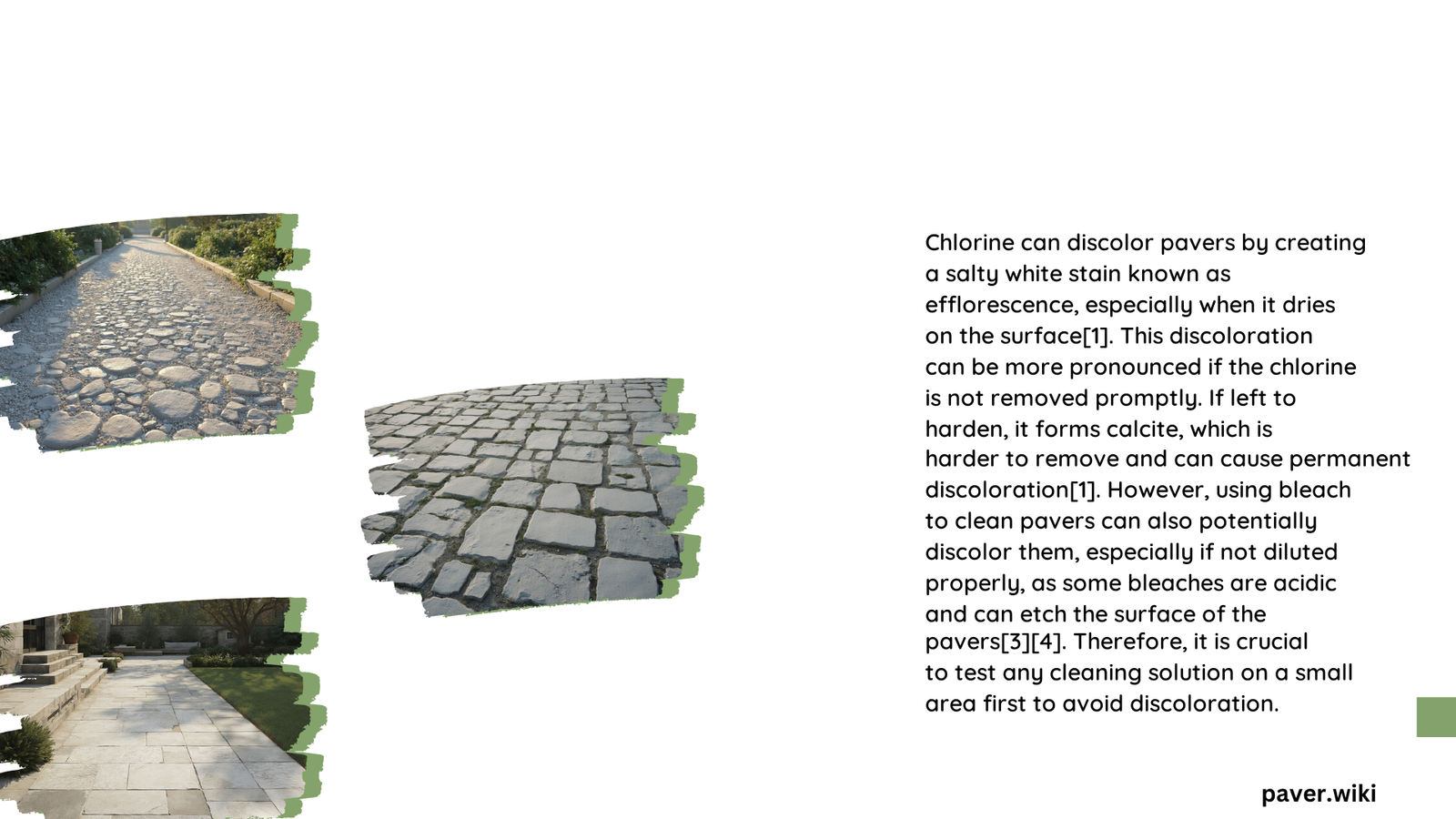Chlorine can indeed discolor pavers, particularly those made of concrete, brick, or natural stone. The extent of discoloration depends on factors such as the paver material, exposure duration, and environmental conditions. This comprehensive guide explores the chemical interactions between chlorine and various paver types, preventive measures, and real-world impacts to help you protect your pavers from chlorine-induced discoloration.
What Are the Chemical Interactions Between Chlorine and Pavers?
Chlorine’s interaction with pavers varies depending on the material:
Concrete Pavers
- Chlorine reacts with calcium hydroxide in concrete
- Forms calcium chloride and other chlorides
- Results in surface erosion and increased porosity
- Discoloration occurs, but specific percentages are not typically quantified
Brick Pavers
- Causes efflorescence (white, powdery stain)
- Due to migration of soluble salts to the surface
- More noticeable on darker bricks
- Does not alter the brick’s intrinsic color
Natural Stone (e.g., Sandstone)
- Chlorine causes fading of natural hues
- Porous nature allows absorption of chlorinated water
- Leads to erosion and significant discoloration over time
What Are the Primary Causes of Chlorine-Induced Discoloration?

Several factors contribute to chlorine-induced discoloration of pavers:
- Chemical Reaction: Chlorine’s oxidizing properties react with paver constituents
- Exposure Duration: Prolonged contact increases discoloration risk
- Paver Quality: Density and quality influence resistance to chlorine damage
- Environmental Conditions:
- Sunlight and weather variations
- Temperature and humidity levels
- Drainage and water infiltration
How Can You Prevent Chlorine Discoloration of Pavers?
To protect your pavers from chlorine-induced discoloration, consider these preventive measures:
Recommended Sealants
- Penetrative sealants for concrete and brick pavers
- Robust sealers for natural stone pavers
Application Techniques
- Regular sealing according to manufacturer’s instructions
- Cleaning routines to remove chlorinated water and debris
- Avoid acid-based cleaners unless necessary for efflorescence removal
Cost Estimates
| Item | Cost Range (per sq ft) |
|---|---|
| Sealants | $0.50 – $2.00 |
| Labor | $1.00 – $3.00 |
Total cost for a 1,000 sq ft pool area: $1,500 – $5,000
What Are the Real-World Impacts of Chlorine on Pavers?
While specific case studies with exact quantifiable results are limited, here are some key observations:
- Efflorescence on concrete pavers can appear within months to a year
- More noticeable on darker pavers
- Does not compromise structural integrity
- Sandstone pavers show significant discoloration over time
- Natural hues fade with prolonged exposure to chlorinated water
- Sealing can prevent discoloration and maintain aesthetic appeal
By understanding the interaction between chlorine and pavers, implementing preventive measures, and being aware of real-world impacts, you can better protect your pavers from chlorine-induced discoloration and maintain their appearance for years to come.
References:
1. https://professionalconcretedrivewaysauckland.com/will-the-chlorine-from-my-pool-damage-the-concrete/
2. https://www.thebrickpaverdoctor.com/brick-paver-efflorescence
3. https://staineaters.com.au/effects-of-chlorinated-and-salt-water-on-sandstone-pavers/
